
Corsica France is beautiful, unspoilt and old-fashioned, and with its white sands, mountainous cliffs and transparent water, it is the perfect getaway destination.
Although it is strongly influenced by France, it retains elements of Italian culture, music and cuisine.
The Corsicans have a strong sense of identity and pride, hanging the Corsican flag or showing the Corsican flag together with the French is appreciated by the locals…
Corsica has 1.000 km of coastline and more than 200 beaches.
Tides – Currents
The range of the tide in this area is negligible. There are no regular currents along the coasts of Corse, except in the Strait of Bonifacio where they are influenced by the winds. After strong NW gales, the current, which usually sets E, may attain a rate of 3 knots.
Winds
The Libeccio, a local W to SW wind, is predominant throughout the year and reaches a maximum frequency in summer. It can be especially violent in the vicinity.
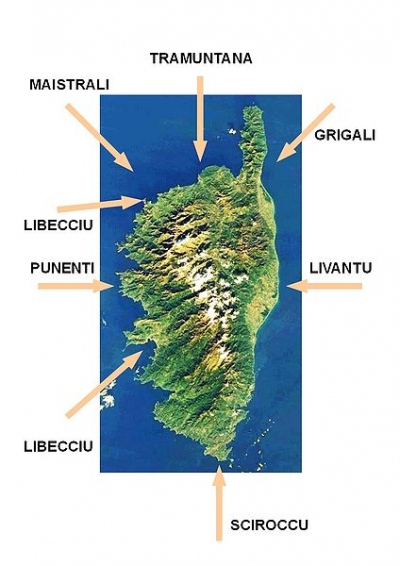
Routes
Routes to Corsica from the south of France can logically be made from just about anywhere east of Toulon. Calvi is a favoured first destination on Corsica because it has a wide easy approach that is easy to enter day or night and you can find shelter from most winds in the bay or the marina. (From Ile de Porquerolles it is 116NM, from St Tropez 102NM, and from Antibes 95NM to Calvi). Apart from Calvi there is no good reason why you cannot head for St Florent, Macinaggio or Bastia, or further down the W coast at Ajaccio. However it is important to take into consideration conditions which can make it difficult entering these harbours such as strong NE-E winds which make the immediate approaches to Macinaggio and Bastia difficult and possibly dangerous, strong northerlies which make the immediate approaches to St Florent difficult, and strong westerlies which can make the approaches to Ajaccio difficult.
Before setting off to or from Corsica it is essential to monitor what the weather is doing. If a mistral rushes down the Rhone valley and fans out towards Corsica while you are on passage, exceptionally large seas can build up in a short time. A listening watch should be kept for warnings of a mistral. On passage from Corsica to France, if a mistral gets up, it’s better to alter course to the French or Italian Riviera, afterwards working westwards along the coast. Apart from the mistral you need to monitor the weather carefully for any lows nearby as they have a habit of stalling and strengthening in the Gulf of Genoa. You will often get a strong libeccio blowing with a low stalled in the Gulf of Genoa with gale force winds from the W-SW and a lot of rain. With bad weather from any direction you need to stay clear of Cap Corse where strong winds from any direction produce confused and often dangerous seas.
Routes from Corsica to Italy can be made day-hopping through the Tuscan Islands to Capraia and then onto Elba just off the mainland coast of Italy. Likewise routes to Sardinia involve a day-hop across the Strait of Bonifacio to any of the marinas or anchorages on the northern side of Sardinia.
Routes around Corsica are a matter of picking suitable harbours and anchorages around the island and these are all dotted at convenient distances to make day-hops easy. You do need to keep an eye on the weather, especially for a mistral or libeccio when cruising the coast, but apart from high season there are more than enough safe harbours and sheltered anchorages to make this easy enough anywhere around Corsica. Around Cap Corse there are no really safe harbours or anchorages between Macinaggio and St Florent. In settled weather there are interesting and reasonably sheltered anchorages, but in the event of unsettled weather care is needed and you should not hang around this stretch of coast. There are more than enough sheltered anchorages dotted around Corsica to make it relatively easy to avoid going into a marina. Keep an eye on the weather as the mistral pushes heavy seas onto the W coast and the libeccio sends in blustery weather from the SW. There are lots of anchorages that provide good shelter from these winds, but plan an alternative in some of the more open (but often stunning) anchorages should strong westerlies threaten.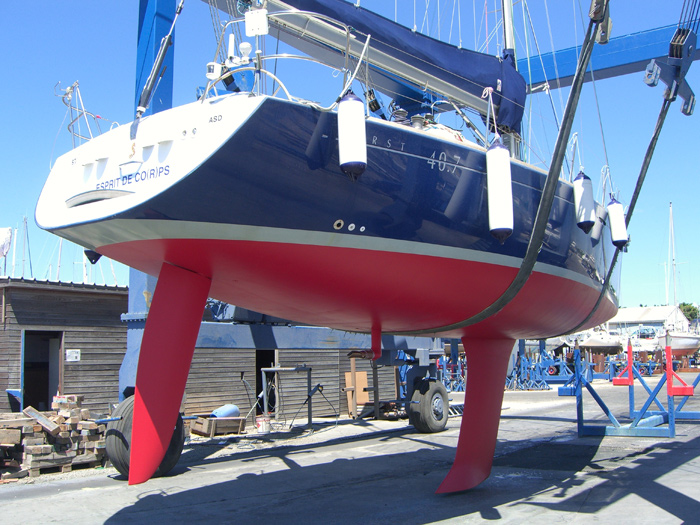 after stripping the old antifoul paint, Esprit de Co(r)ps got underwater treatment and new antifoul, ready for summer!
after stripping the old antifoul paint, Esprit de Co(r)ps got underwater treatment and new antifoul, ready for summer!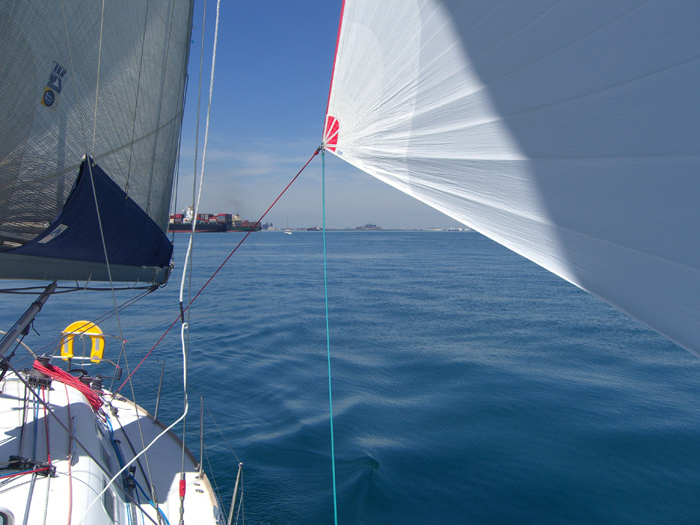 after tree days of waiting for the Mistral to leave, finally we could leave. Naturally without wind…..fortunatly we could raise the gennaker and soon the wind raised to 9 knots so that we were running 9 knots boat speed towards the Clanques.
after tree days of waiting for the Mistral to leave, finally we could leave. Naturally without wind…..fortunatly we could raise the gennaker and soon the wind raised to 9 knots so that we were running 9 knots boat speed towards the Clanques.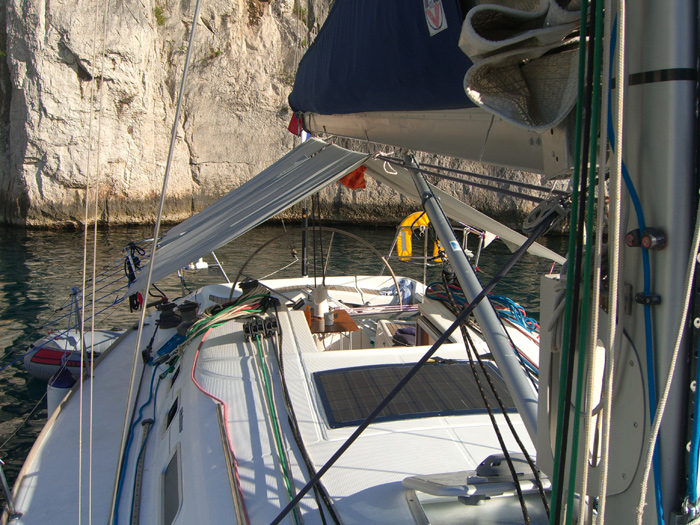 Calanque de Port Miou, near Cassis
Calanque de Port Miou, near Cassis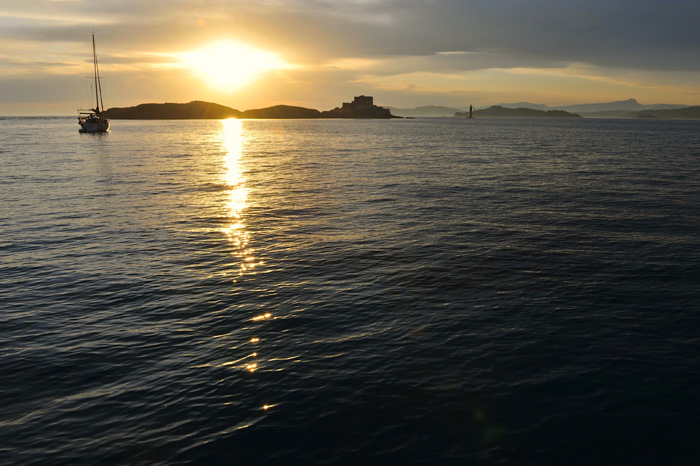 Porquerolles, Baye du Langoustier, evening
Porquerolles, Baye du Langoustier, evening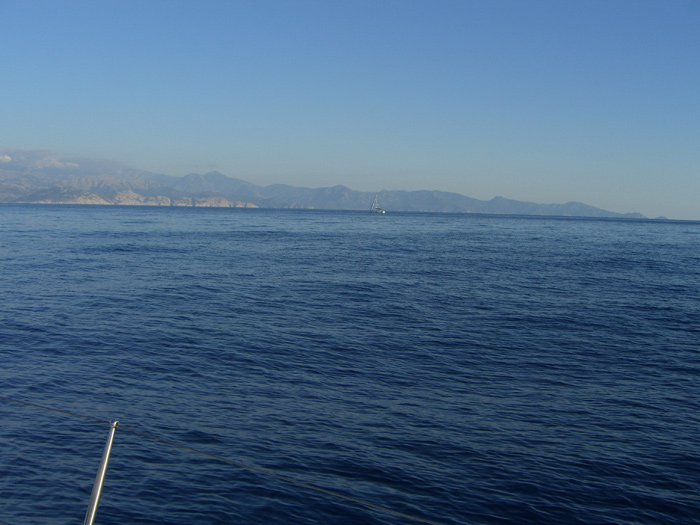 Corse, approach of the Island near Calvi looking SE
Corse, approach of the Island near Calvi looking SE Calvi approach with the high mountains in the back
Calvi approach with the high mountains in the back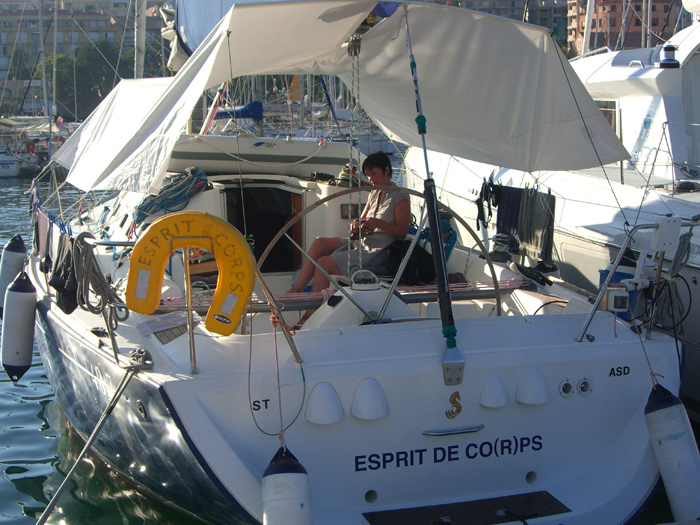 Calvi Harbour
Calvi Harbour
The Citadel was founded in 1268 by the Genoese and helped to push many attacks.
The last date of August 1794 which made 6000 English siege of the city.
It is said that Christopher Columbus was born in Calvi.
Beautiful city. Good shelters. Anchoring in the bay.
Easy access by day and night except winds SSW, NNE.
VHF: 9
T: 04 95 65 42 22;
232 berths.
Harbour:
Harbourmaster: Tél. 95 65 10 60
Regulated water – water pipe equipped with an automatic closing system.
500 pl. which 150 visit. (<55 m)
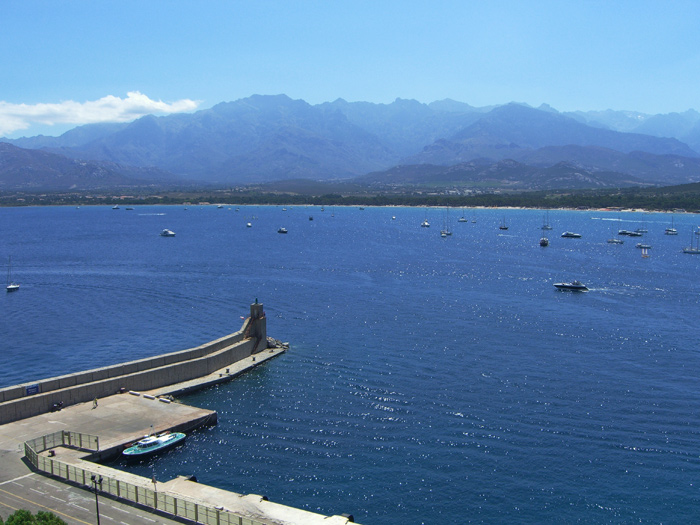 Corse, Calvi Baye
Corse, Calvi Baye Corse, Calvi, parking for the beach….
Corse, Calvi, parking for the beach….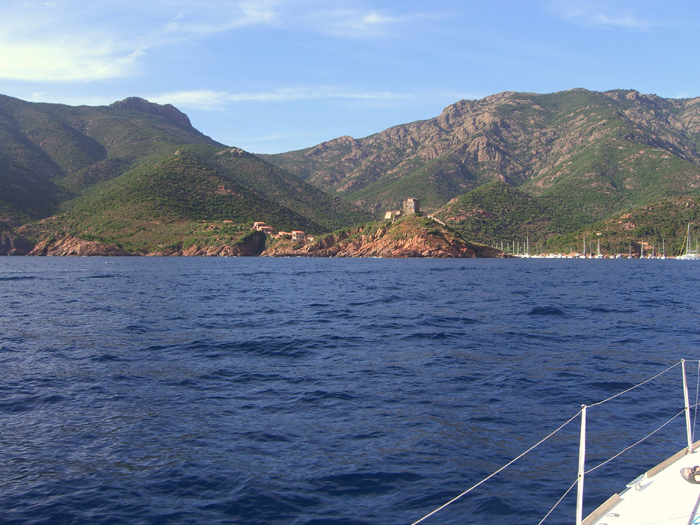 Corse, heading towards Girolata Bay
Corse, heading towards Girolata Bay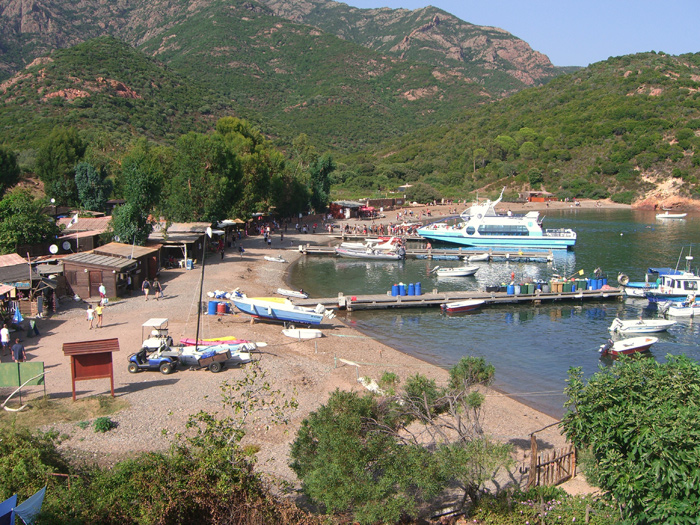 Corse, Girolata Bay, the beach and some beach houses
Corse, Girolata Bay, the beach and some beach houses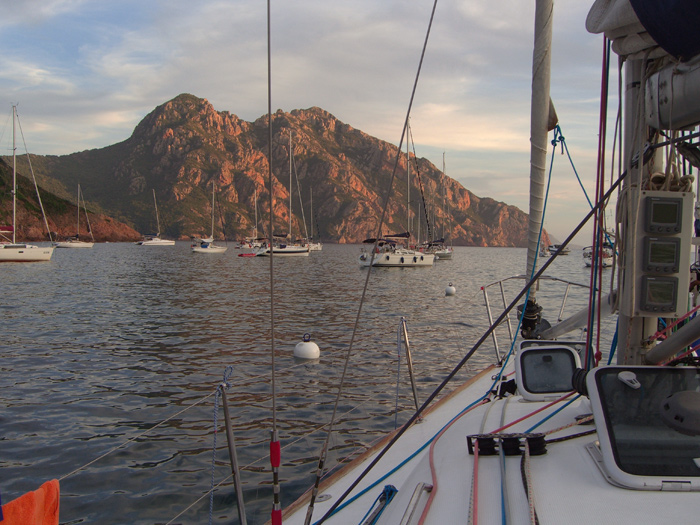 Corse, Girolata, anchoring on mooring boys in the evening looking S
Corse, Girolata, anchoring on mooring boys in the evening looking S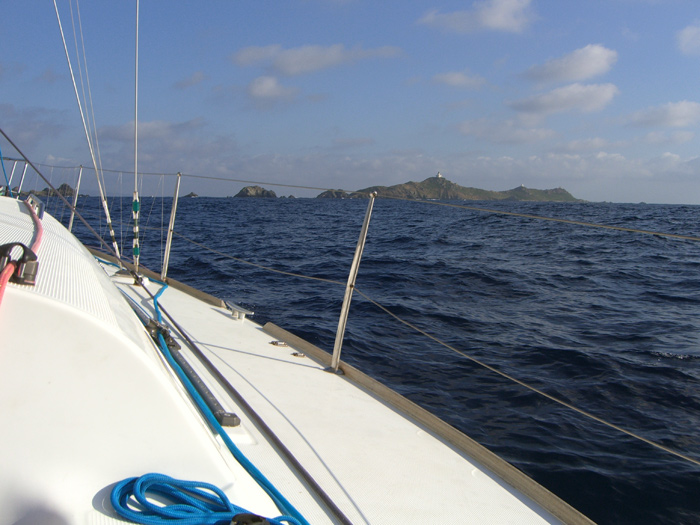 Corse, Ajaccio, Iles Sanguinaires approach
Corse, Ajaccio, Iles Sanguinaires approach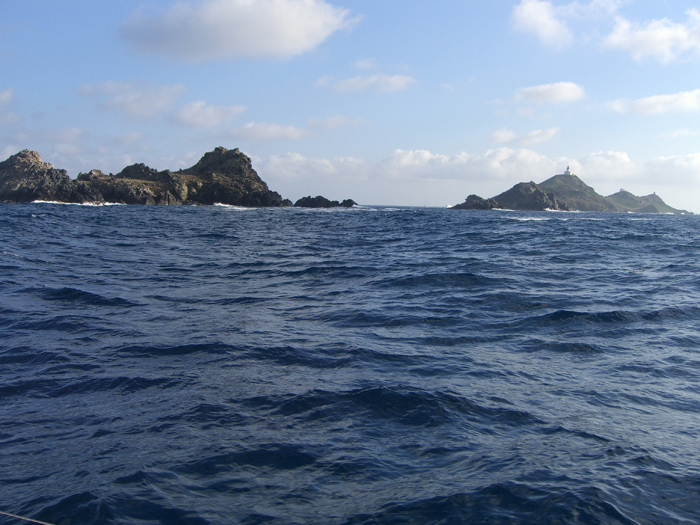 Corse, iles Sanguinaires, passage between the islands
Corse, iles Sanguinaires, passage between the islands
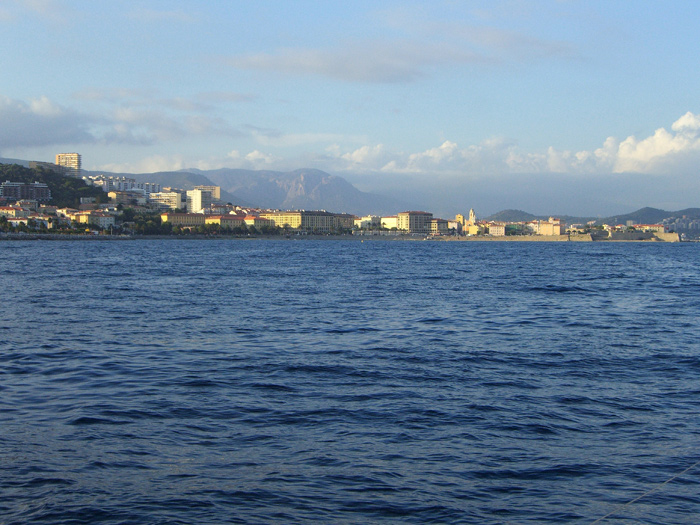 Corse, Ajaccio approach
Corse, Ajaccio approach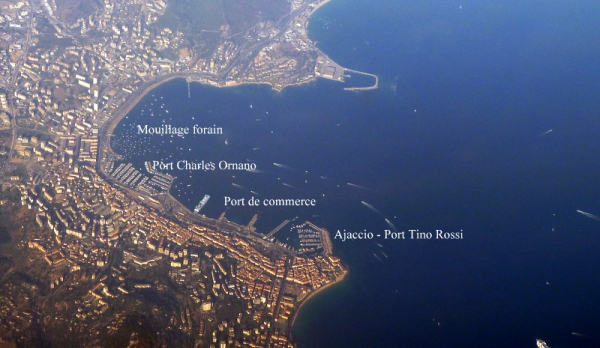
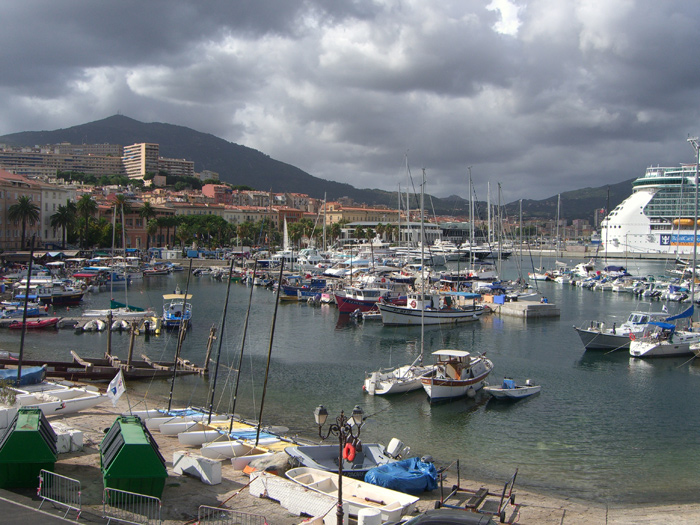 Corse, Ajaccio, Port Tino Rossi
Corse, Ajaccio, Port Tino Rossi
Ajaccio bay offers numerous coves and ports. The city of Ajaccio is the biggest of the west coast. You will find there all services required by sailors. An airport and ferries allow to join France mainland everyday. Corse, Baye de Sagone, anchoring on mooring boys
Corse, Baye de Sagone, anchoring on mooring boys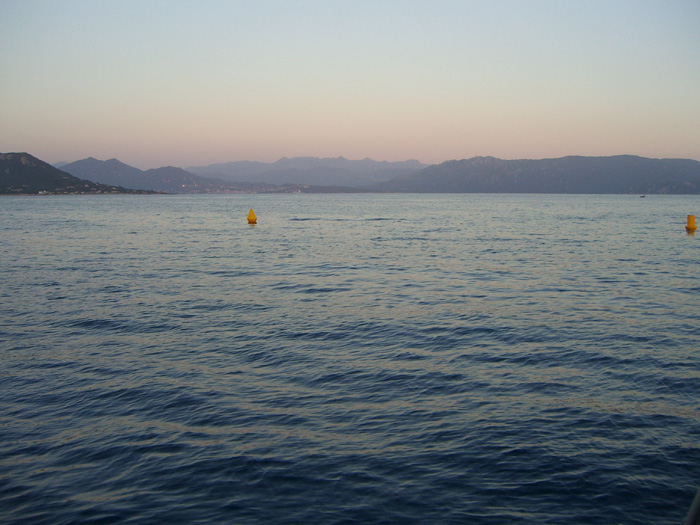 Sagone looking SE
Sagone looking SE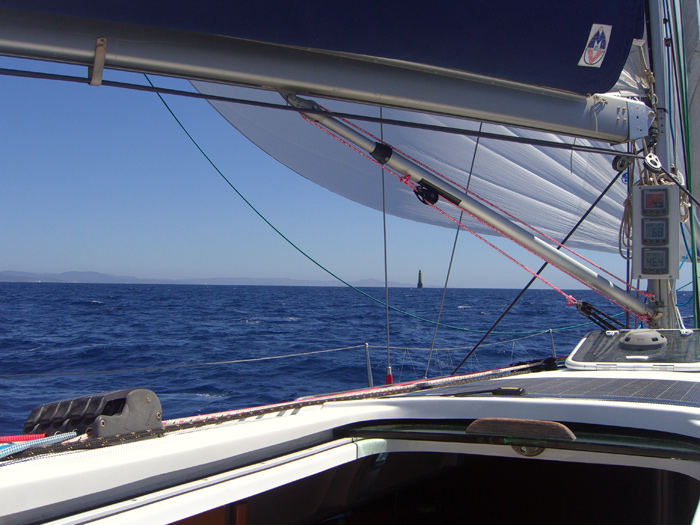 Corse, heading towards Bonifacio, Les Moines lighthouse
Corse, heading towards Bonifacio, Les Moines lighthouse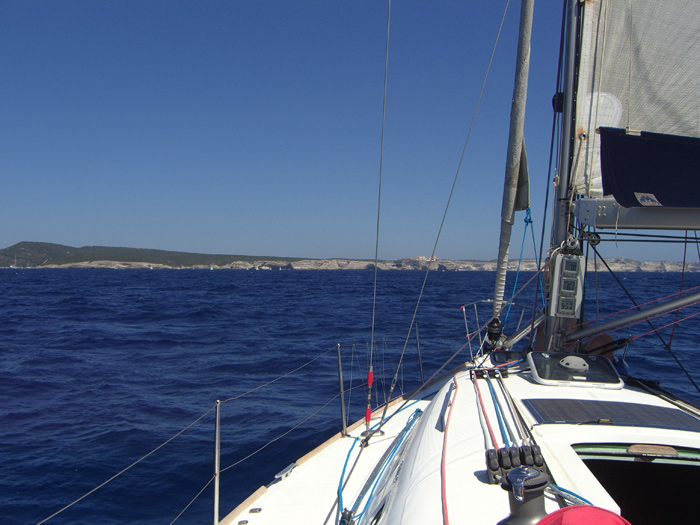 Corse, Street of Bonifacio, approach of the city
Corse, Street of Bonifacio, approach of the city Corse, Bonifacio harbour entrance
Corse, Bonifacio harbour entrance
Bonifacio is a very nice port you need to visit during your trip in south Corsica.
Sometimes, when it’s windy, the port is very very busy. You need to arrive early in the day to find a place. It can take hours but nice sailors (red T-shirts) will help you.
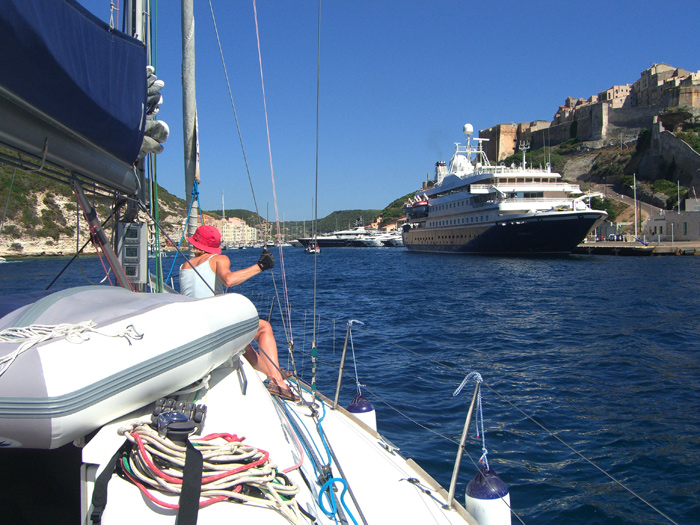 Corse, Bonifacio, entering the harbour
Corse, Bonifacio, entering the harbour Corse, Bonifacio harbour
Corse, Bonifacio harbour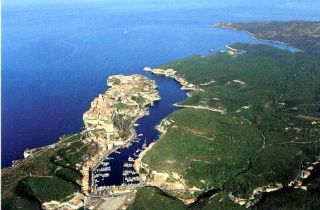
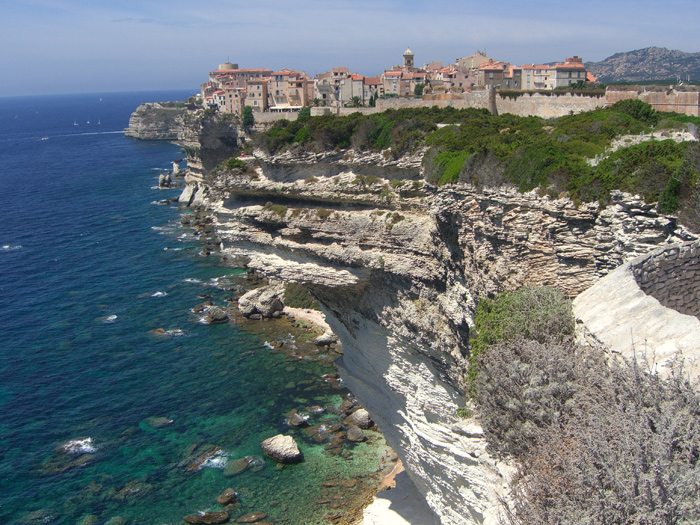 Corse, Bonifacio, the old town on the rocks
Corse, Bonifacio, the old town on the rocks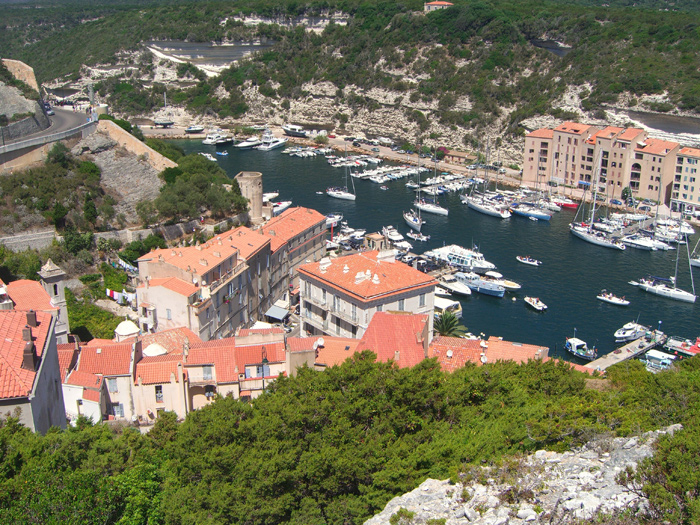

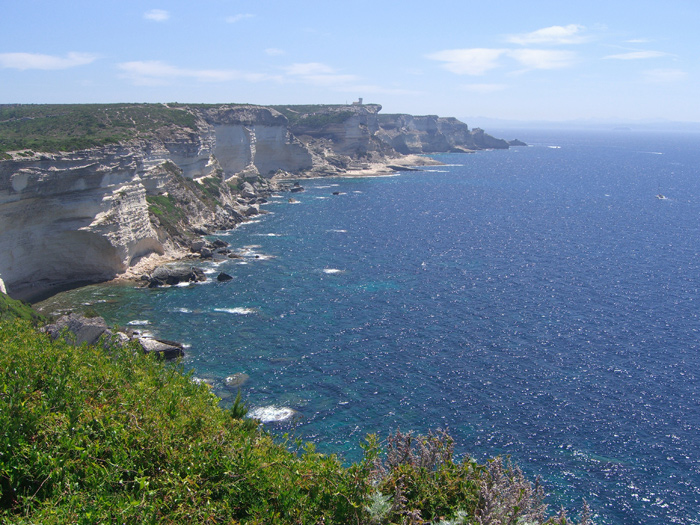 Corse, Bonifacio, looking SE
Corse, Bonifacio, looking SE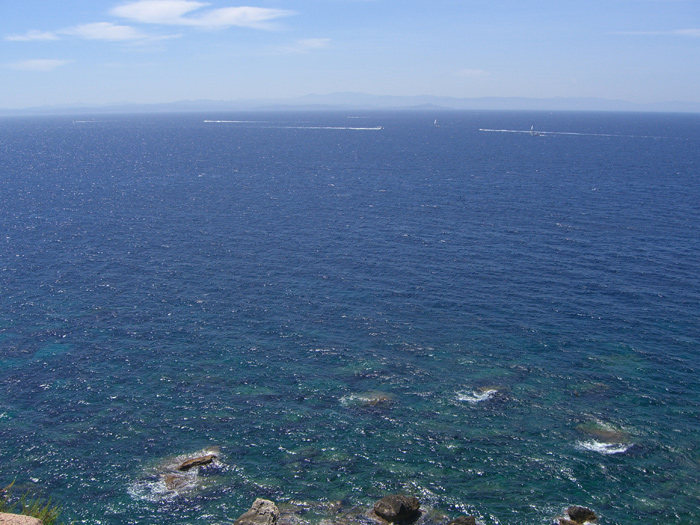 Corse, street of Banifacio, looking towards Sardegna (IT)
Corse, street of Banifacio, looking towards Sardegna (IT)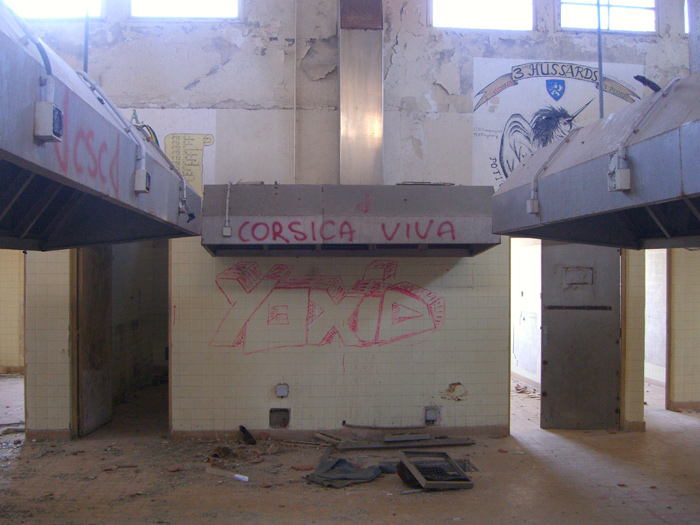 Corse, Bonifacio, Armee d’Etranger
Corse, Bonifacio, Armee d’Etranger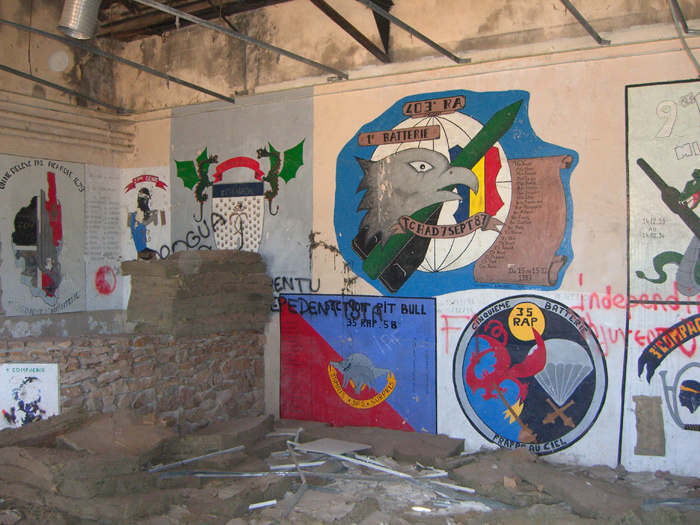
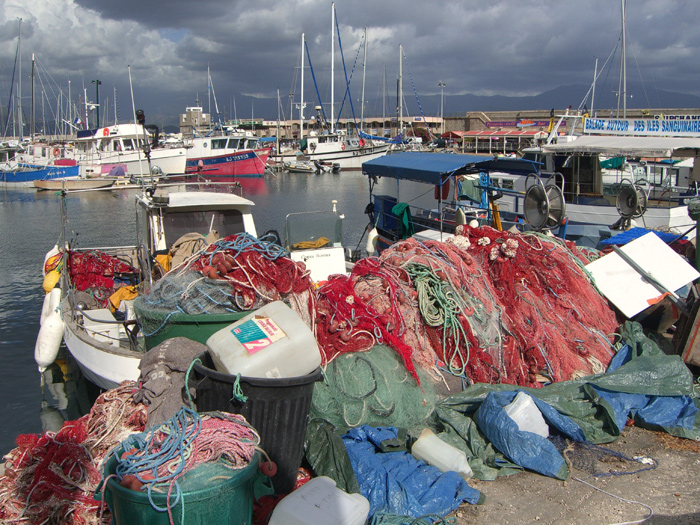 From Bonifacio back to Ajaccio to pick up new crew….
From Bonifacio back to Ajaccio to pick up new crew….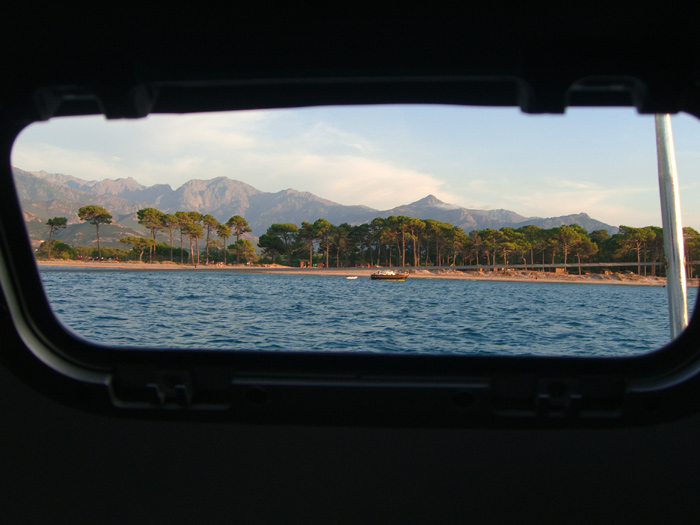 From Ajaccio we went back to Calvi with a stopover in Sagone
From Ajaccio we went back to Calvi with a stopover in Sagone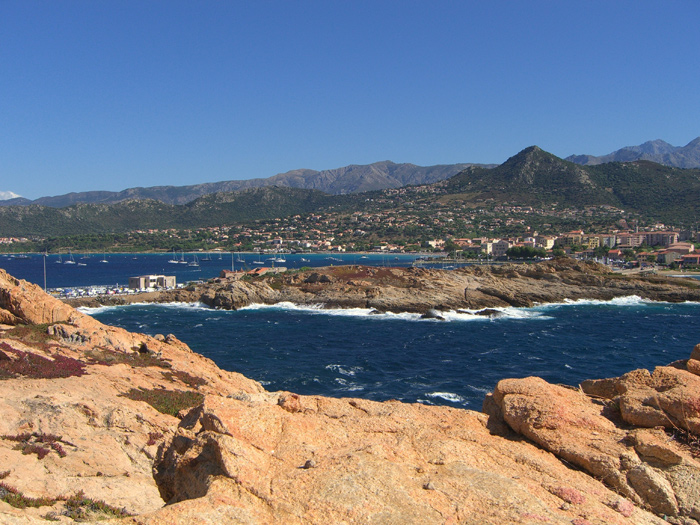 after two days in the Calvi Bay we went to Ile Rousse, to pick up Lize
after two days in the Calvi Bay we went to Ile Rousse, to pick up Lize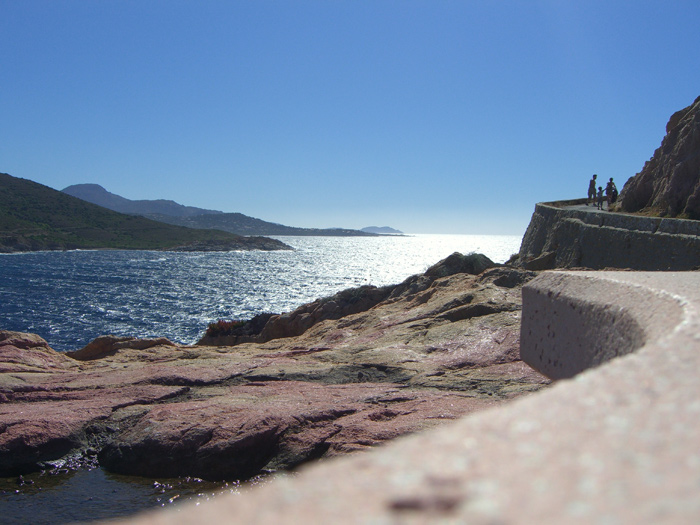 Ile Rousse, looking SW
Ile Rousse, looking SW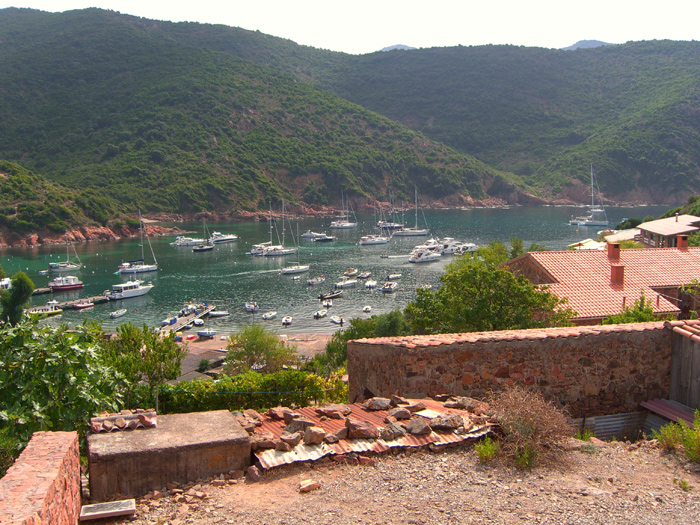 to escape the strong winds in the Northwest sector (9 bft.) of Corse we sailed south to Girolata again. less wind and a good reason for some hiking in the mountains
to escape the strong winds in the Northwest sector (9 bft.) of Corse we sailed south to Girolata again. less wind and a good reason for some hiking in the mountains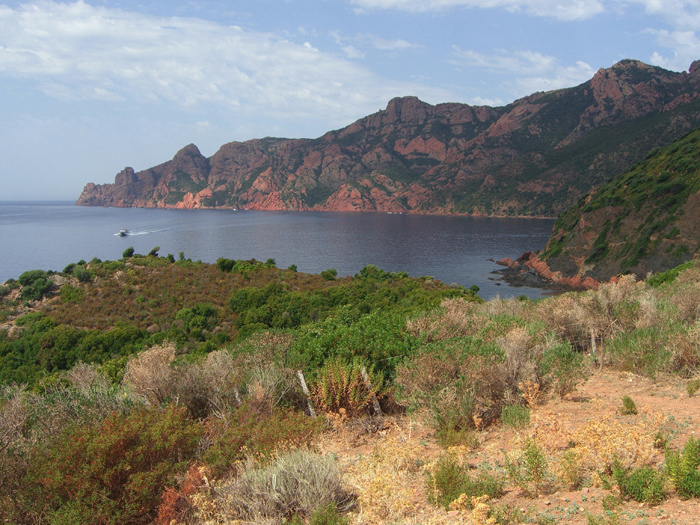 Punta Scandola seen from Girolata
Punta Scandola seen from Girolata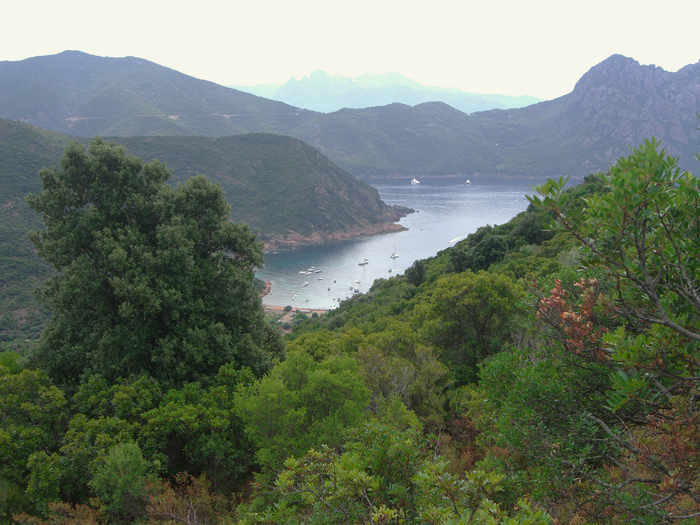 Girolata seen from the mountains above
Girolata seen from the mountains above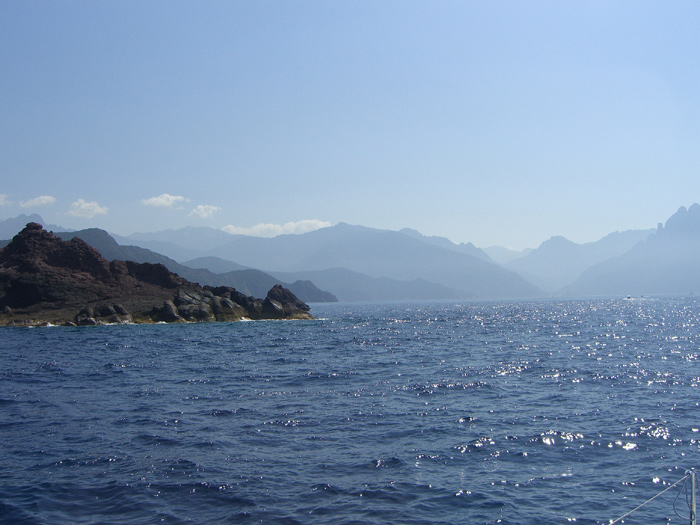 a little more south, in the Bay of Porto
a little more south, in the Bay of Porto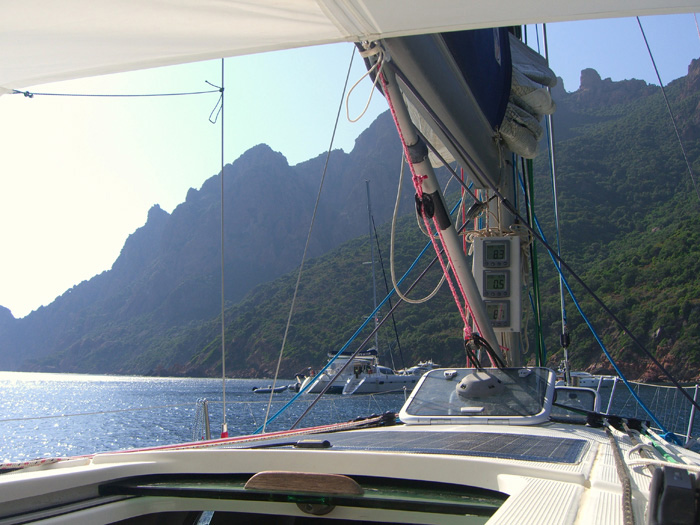 Quit anchoring in the Bay of Porto, only one neighbour…
Quit anchoring in the Bay of Porto, only one neighbour…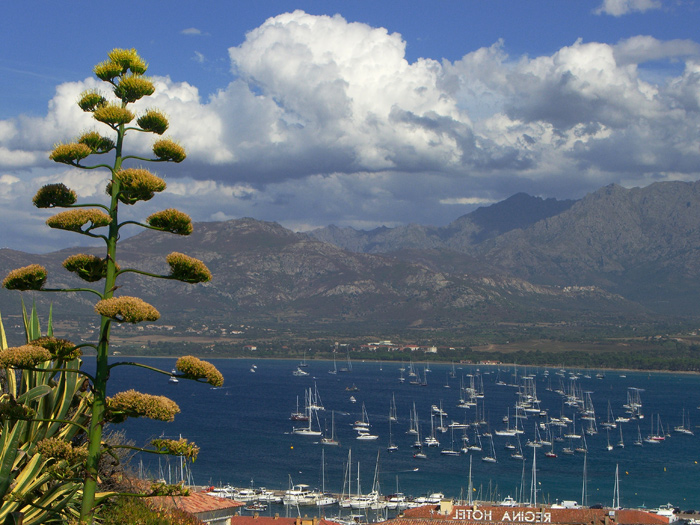 before leaving for the mainland we went to Calvi (bay) and anchored there for two days
before leaving for the mainland we went to Calvi (bay) and anchored there for two days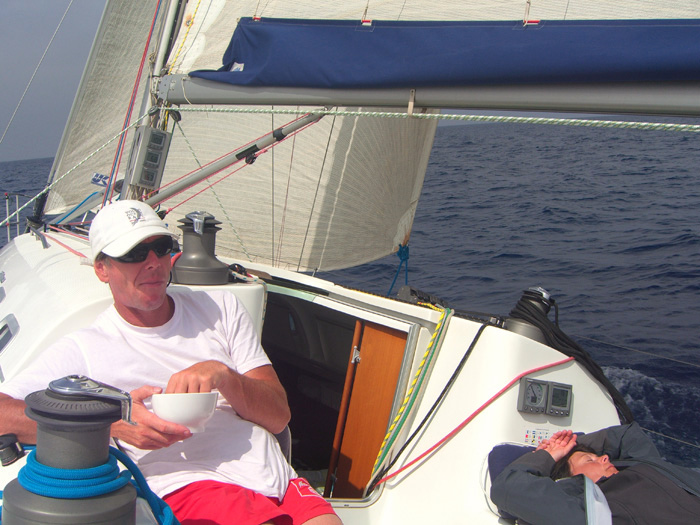 the return…we sailed to Cap Camarat, near Saint Tropez
the return…we sailed to Cap Camarat, near Saint Tropez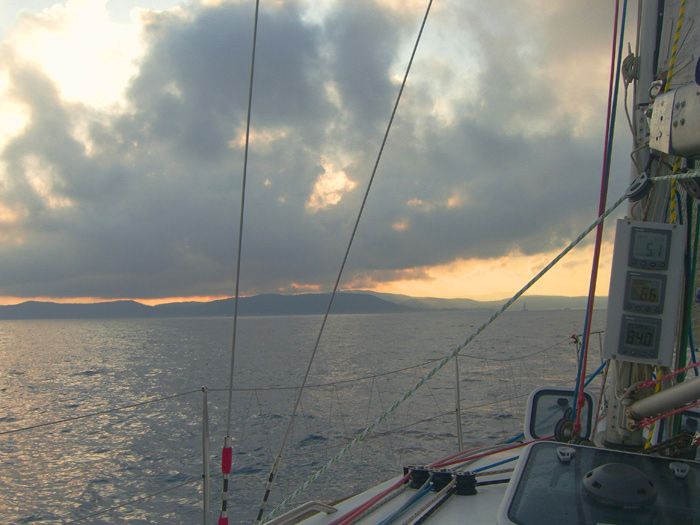 In the Golfe de St Tropez the anchorage in Baie des Canoubiers is an old favourite affording good shelter except from strong northerlies, particularly NE. There are several other anchorages around the gulf including the anchorage under Pte des Sardineaux which affords shelter from the marin. Most of the slop you get in the gulf is from motorboats charging in and out, particularly at weekends.
In the Golfe de St Tropez the anchorage in Baie des Canoubiers is an old favourite affording good shelter except from strong northerlies, particularly NE. There are several other anchorages around the gulf including the anchorage under Pte des Sardineaux which affords shelter from the marin. Most of the slop you get in the gulf is from motorboats charging in and out, particularly at weekends.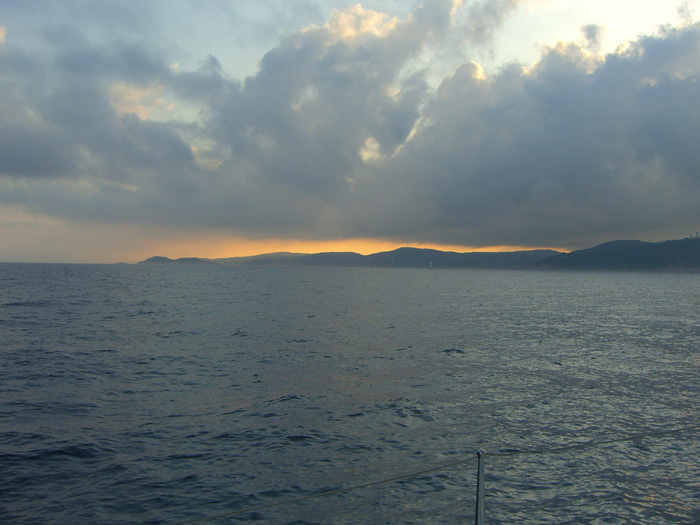 eventually we dropped our anchor in the Baye de Pampelonne
eventually we dropped our anchor in the Baye de Pampelonne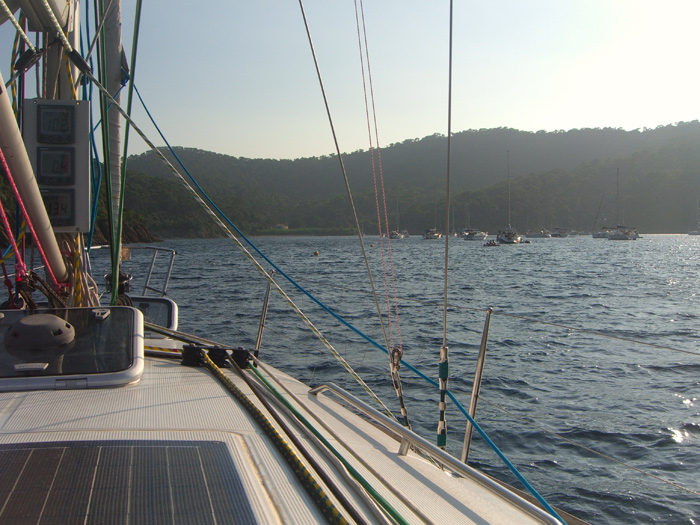 the next day…..Port Cros, Baye de Port Man
the next day…..Port Cros, Baye de Port Man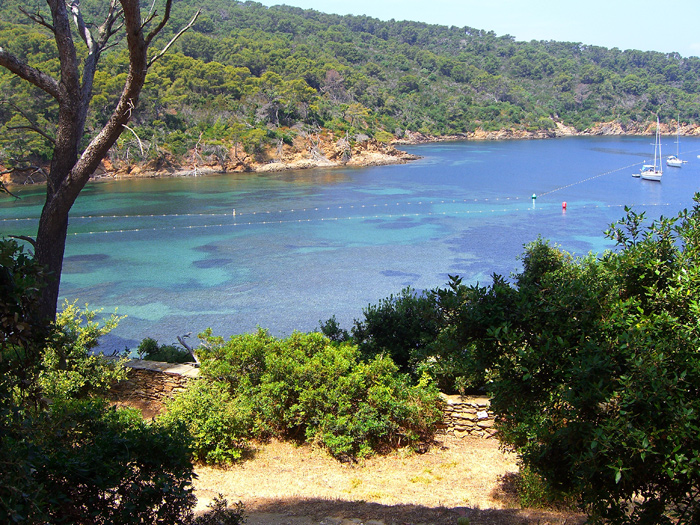 Baye de Port Man seen from above
Baye de Port Man seen from above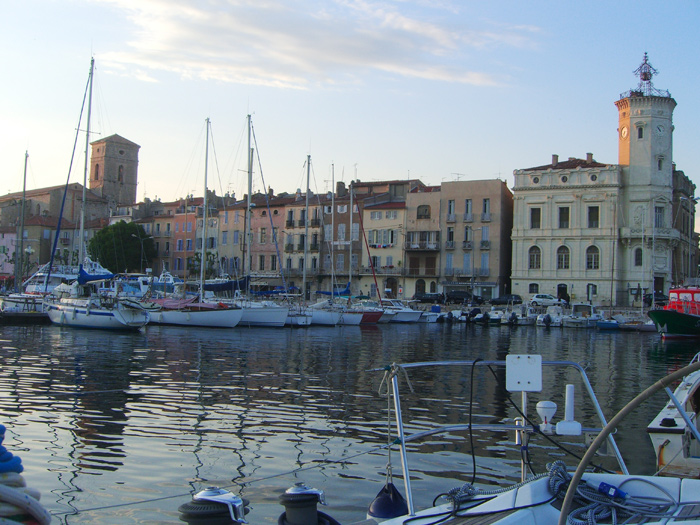
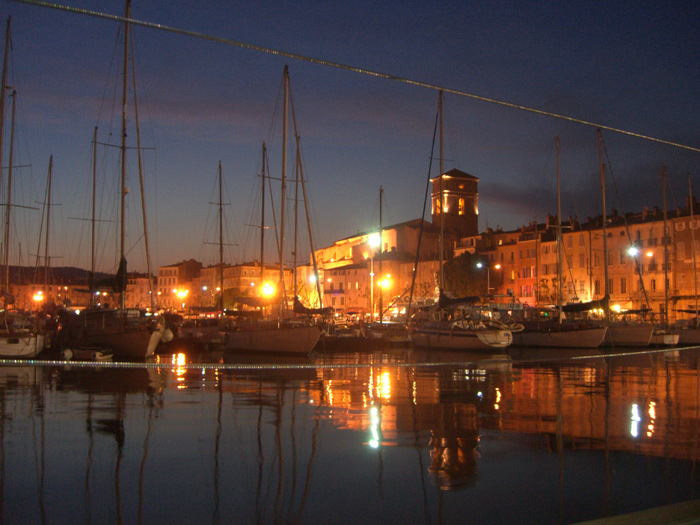 In La Ciotat we left part of the crew, Lize and I proceeded to the Calanques and home…
In La Ciotat we left part of the crew, Lize and I proceeded to the Calanques and home…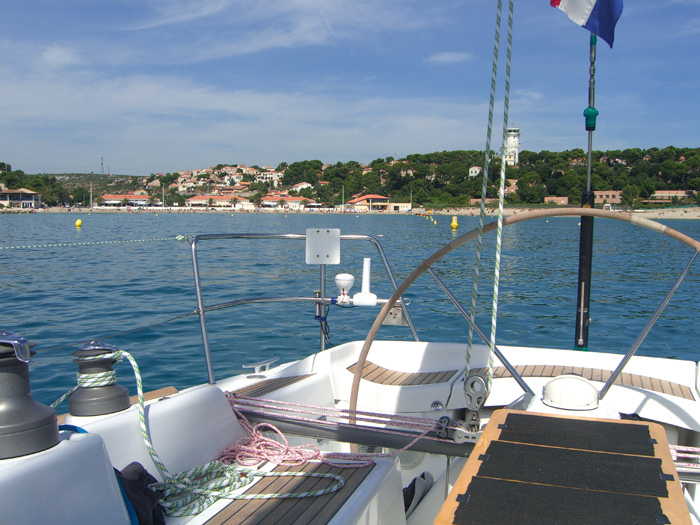 the last night before we went to Port Napoleon, we anchored in Carro, Baye de Couronne
the last night before we went to Port Napoleon, we anchored in Carro, Baye de Couronne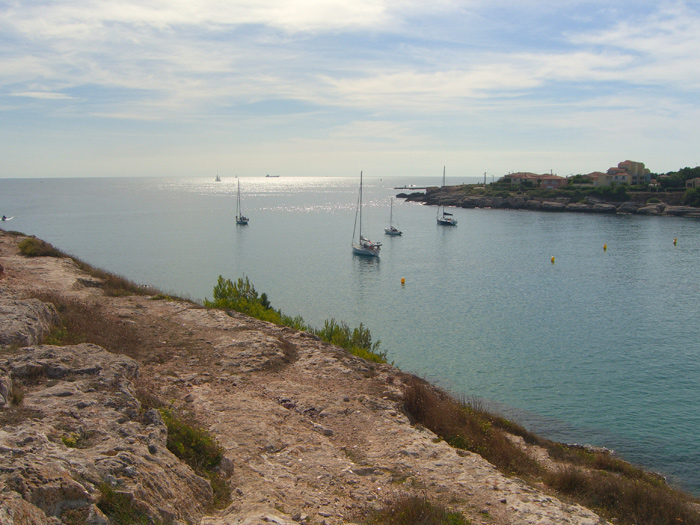 after cleaning the boat a bit we went to Port Napoleon the next day…
after cleaning the boat a bit we went to Port Napoleon the next day…
